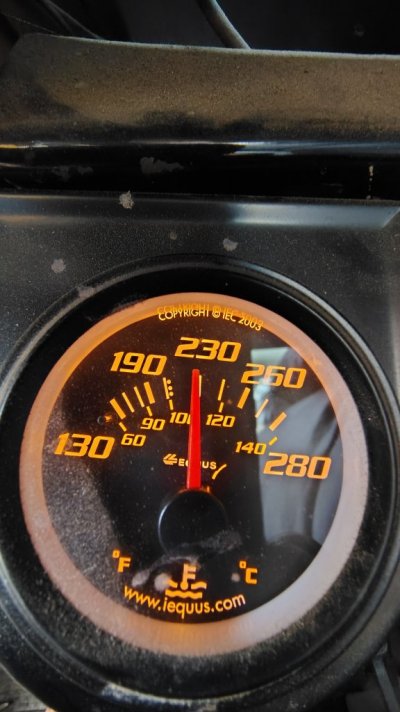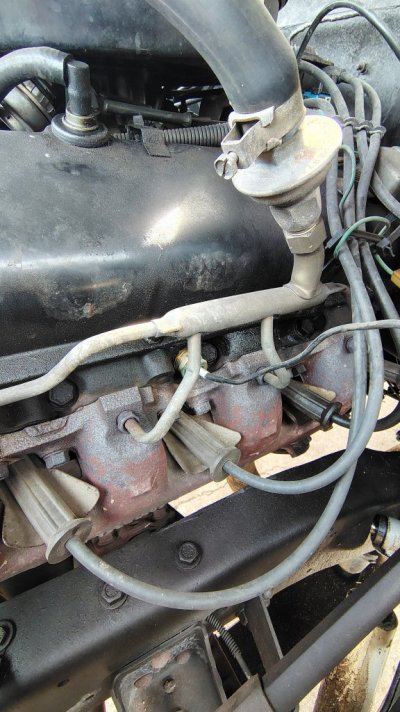Adding to the discussion maybe it will help although I’m not well read on reg vs reverse rotation, but I have a Gen VI 454 bone stock in the 86. But it has old fashioned v belt system. Presuming the water pump was swapped for a v belt pump when the engine went in.
So do they cool the same reg or reverse rotation? I’d think so. IE it doesn’t matter which way you push the coolant through the engine.
But reverse cools the heads quicker (aka the 90s lt1 engines, early aluminum head 350s).
Not sure if this helps w your issue or just rambling.
There are two different things happening here.
First, the regular rotation and reverse rotation water pump does not change the coolant path. It only changes the way the pump moves the coolant through the same path because the pump rotates the opposite direction on the serpentine belt systems.
Second, the Mark IV coolant path is different than Gen V and Gen VI big blocks. The change was made in the block castings and head gasket though, so it has nothing to do with the water pump.
Here is one discussion I found on it:
"Coolant Routing Mk IV/Gen 5/Gen 6
There are two different ways that coolant can be routed through the engine: series flow and parallel flow. Both ways work just fine. There may be a slight preference for parallel flow, but it is not a big deal. Series flow has the water exiting the water pump, flowing through the block to the rear, it then transfers through the head gasket and into the cylinder head through two large passages on each cylinder bank at the rear of the block. The coolant then travels from the rear of the head, forward to the front of the head, into the intake manifold water passage and out past the thermostat and thermostat housing. The water cools the block first, then it cools the head. The coldest water (coming out of the water pump) is directly below the hottest water (having already picked up the heat of the block and the head) as the hot water transfers into the intake manifold. By contrast, parallel flow has the water exiting from the water pump into the block, where a portion "geysers" up into the head between the first and second cylinder, another portion "geysers" up to the head between the second and third cylinders, another portion geysers up to the head between the third and fourth cylinder, and the remainder transfers to the head at the rear of the block. The coolant temperature inside the engine is more even that way. The differences in coolant routing is having (or not having) the three additional coolant transfer holes in each block deck, and three matching holes in the head gasket. The heads have passages for either system, and are not different based on coolant flow.
Be aware that gaskets that DO have the three extra holes between the cylinders often have restricted coolant flow at the rear--instead of having two large coolant transfer holes at the rear, there is only one, and it's the smaller of the two holes that remains. This is important because if you use a parallel flow head gasket on a series flow block, you can have massive overheating and there's NOTHING that will cure the problem except to replace the head gaskets with ones that don't restrict flow at the rear of the block, or to drill the block decks to allow the coolant to flow into the head between the cylinders. Here's why they can overheat: A series-flow block doesn't have the openings between the cylinders, no coolant can flow up to the head there. The gasket may only have the single, smaller opening at the rear, so the amount of water that gets through that opening is greatly reduced from what the block designers intended. The result is that the coolant flow through the engine is only a fraction of what is needed.
Most, but NOT all Mk IV engines are Series Flow. ALL Gen 5 and Gen 6 engines are Parallel Flow. A series flow block can be converted to parallel flow by drilling 3 holes in each deck surface, and then use parallel flow head gaskets. You can use the parallel flow gaskets as templates for locating the additional holes. It's really easy: Put the parallel flow gaskets on the block, mark the location and size of the three extra holes. Remove the gasket. Grab a 1/2" drill and a drill bit of the correct size, and pop the extra holes in the block. There is NO modification needed on the head castings. Some blocks have one of the holes already, but it needs to be ground oblong to properly match the gasket. Again, very easy with a hand held die grinder and rotary file."
That head gasket you said you installed looks like a parallel flow gasket... did you have holes at the bottom of the block deck surface that lined up with the large holes in the head gasket? If not, you might be overheating because you are choking the coolant flow off with those gaskets.
Also, just for simplicity... you might have a big air bubble in there too. Have you tried lifting the front of the truck as high as you can get it, then filling the coolant, and then running the engine to full warm with the radiator cap off?



